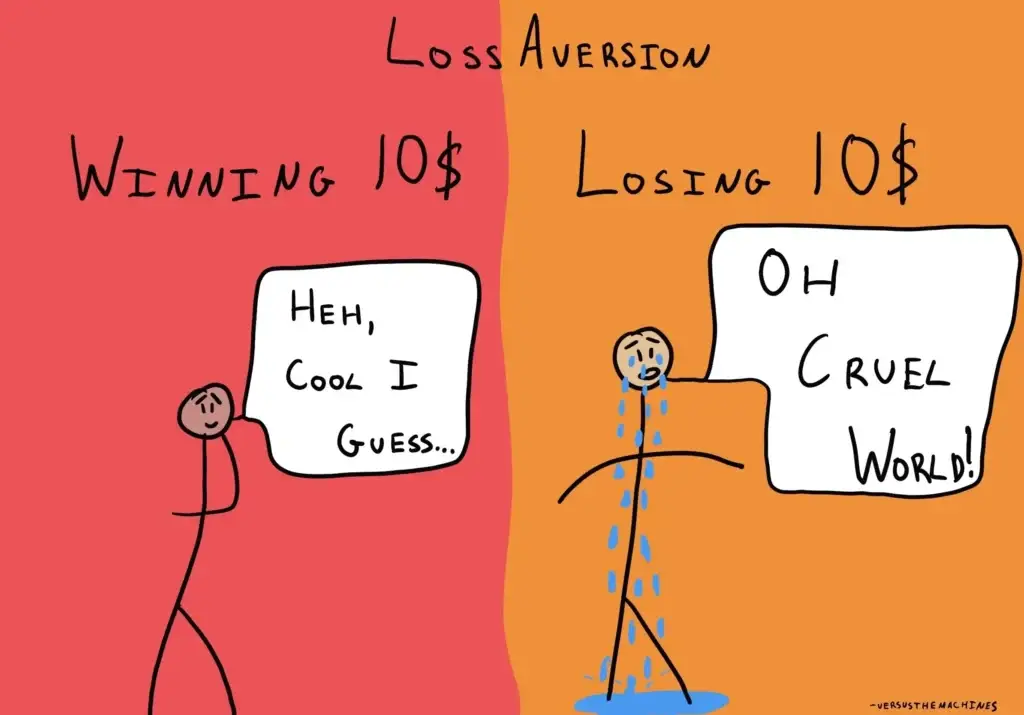Word on the grapevine is that Forbes Advisor has dug up some really insightful facts for digital marketers:
- There are about 1.13 billion websites on the internet in 2023.
- A new website is built every 3 seconds.
- 71% or businesses have a website in 2023
- 43% of small businesses are planning to invest in the performance of their website in 2023.
- 28% of business is now conducted online, signaling the growing trend of e-commerce and digital marketing.
Clearly, we live in a world filled with numbers and statistics. With such an overwhelming number of websites, social media pages and platforms, catching attention, manufacturing interest, and retaining customers is becoming a mounting challenge for marketers.
That said, there is a secret weapon to cut through the noise and hit the bull’s eye.
That secret weapon is the comparatively potent realm of digital psychology.
In the grand scheme of things, digital psychology is a concept, whipped up by combining digital marketing with behavioral economics and psychology.
Tools like Google Analytics tracks WHAT your customers are up to on the internet. However, digital psychology strives to pick apart the consumer brain, uncover HOW people behave online and most importantly, uncover WHY they are doing it.
In essence, digital psychology’s role in the digital marketing ecosystem is that of a strategic vision piece that optimizes digital marketing campaigns where raw numbers or technology fall short.
It aims to identify how you can create a form of online communication and messaging that is persuasive to the unconscious mind, upgrades customer journey so much so that it translates into more actionable conversions.
Often, consumer behaviour and decision making are centered on heuristics that are subconscious decisions and mental shortcuts we rely upon to save our time and effort. Savvy marketers know that tapping into consumer’s cognitive biases can help hit the digital gold mine and tip the scales in their favour.
Thus, the messaging in digital campaigns are designed keeping consumer psychology at the forefront rather than technology.
5 such digital psychology tactics used in effective marketing are as follows:
1. Scarcity is the FOMO creator. It’s the classic trigger that enables action.

On social media platforms, everyone wants to be a part of something larger, find emotional points of connection, join a tribe. Hence, the term FOMO or “Fear of Missing Out” is a very real concept. It is the fundamental human drive to act like the social animals we are and join a community.
Digital campaigns like to cash in on this urge by transforming it into urgency. This is done by creating illusions of scarcity which in turn triggers and increases consumer’s desire to buy so as not to miss out on an opportunity everyone’s talking about.
Digital campaigns create scarcity and urgency in 4 main ways for consumers to get on the bandwagon:
In short supply: booking.com, fabhotels, and oyo rooms are genius when it comes to triggering urgency. By using phrases and hook content like “final call,” “only 1 room left, “limited supply,” and “only 10 in stock” creates a needling sense of urgency.
For a limited time: Myntra plays on the definitive time window theme to get people to shop and swipe cards within 2-3 days. Using phrases like “24 hours flash sale” and “Sale is LIVE from 28th April – 30th April” gets people scrambling to fill their carts before the product and bumper discounts go out of stock.
High demand: Compelling taglines and copy such as “1437 sold today,” “On 1400+ Beauty & Personal Care Brands” emphasizes popularity and wide product offerings that increases the likelihood of buying.
Digital campaigns of e-commerce giants such as Nykaa and Myntra, Flipkart include content on their wide customer base to encourage binge shopping.
Emphasizing high demand also positions the company as credible, trustworthy, reliable where the majority of the crowd flocks, enabling the campaign to drive sales by hitting the human need for social proof.
Unique Opportunity: By inserting content like “members only, “early VIP access,” or “unique discount code” makes customers feel privileged to have such offers presented exclusively to them.
For instance, Myntra offers early VIP access to “Insiders” who are the top-tier shoppers of the e-commerce. This psychological tactic utilizes the reward system to prime customers towards purchasing more during the special slots and discounts allotted specially to them by the platform.
Hence, the traffic increases on this scarcity principle.
2. The power of Hashtags. Not just for structure, but also for setting the mood/tone of the campaign.

Using hashtags in digital campaigns are not just for content categorization based on a specific theme so that the user can engage easily with streamlined and related posts.
It also increases the reach of your content beyond your followers. People searching for or following that particular hashtag can discover your post, build a community or group around a common hashtag.
It is said that birds of a feather flock together and hashtags confirm this psychological impulse. They work on the psychological principle of uniting you with your tribe, helps with community building, creating a branded hashtag that can help amplify awareness and increase engagement around your campaign.
Recently, the D2C brand Chaayos did a hit campaign on #AisaBhiHoSaktaHai to launch their new beverage Chai Frappe that is launched as a unique anomaly in the market.
To normalize the cross between tea and coffee in their Chai Frappe, Chaayos started the hashtag #AisaBhiHoSaktaHai to set the tone of improbable events actually coming true or being possible of actually materializing in the real world.
This campaign is a psychological conditioning by Chaayos to increase acceptance of their new product in the market by convincing customers that weirder things have happened in the universe before.
For example, their recent creative taglines read:
“Jab coffee-lover aur chai-ke shauqeen ka match ho sakta hai, Toh Chaayos Chai Frappe bhi ho sakta hai.“
“Jab Goa Plan successful ho sakta hai, toh Chaayos Chai Frappé bhi ho skta hai!”
The Chaayos campaign is a hit, as the brand has shrewdly collected customer validation for the unique Chai Frappe by asking them to participate in the contest and tell them about their own stories of improbable events coming true in real life.
3. Social Proof works like a charm in digital campaigns:

Studies show that 92% of online customers read at least one product review before swiping their debit cards, with the majority of shoppers reading between 1-6 reviews before finally making a purchase.
The fact is, we humans like to follow the crowd and play safe.
By inserting positive reviews, happy customer stories and feedbacks, messages, etc visiting customers are more willing to buy the product that they assume is already tried and tested.
There are a number of ways, this badge of social proof can be included in digital campaigns to make it a resounding success:
- customer reviews
- total subscribers/ followers
- total number of shares, searches, etc
- success stories by customers
- client, investor logos
- third- party certifications
- security badges
A clear example of this psychological tactic has been used by the up and coming D2C brand Bewakoof in their marketing strategy.
On the company’s 11th birthday, they announced the big news of Aditya Birla’s TMRV investing INR 200 crores in Bewakoof.com in the form of a validation post on Instagram.
They inserted a news clipping in their post to amplify their achievement and the recognition Bewakoof.com has been receiving from industry giants.
This is because authority figures, association with big brands provide another type of social proof for customers, making them more inclined to try out newer names in the market.
4. Loss Aversion Bias is real in customers.

Loss aversion bias refers to the human tendency to avoid losses at all costs and strive to make profits or equivalent gains.
In simpler words, the fear of losing or paying more far outweighs the pleasure of winning or buying something at a cheaper price.
Therefore, marketers harness this psychological phenomenon in the way they position their digital campaigns. For example, phrases like “Flat 200 off for new customers,” “up to 80% off,” and “1+1 free” successfully grab customer’s attention.
Not only this, coupon codes work as a major incentive for shoppers who are looking to cart items on a budget.
For example, online shopping giant AJIO goes the extra mile to highlight its numbers during the mega sales.
It successfully uses numbers to grab eyeballs and create sensational hype about mega extensive savings and discounts:
AJIO ALL STARS SALE
50-90% OFF | 5000+ Brands | 1.2 Million Style
Such quantified content and taglines create the mental image of thrift shopping for customers who are attracted to the idea of savings and want to avoid paying the full price at all costs.
5. Reels and videos are the way to preach! Visual Aids help in sustaining customer focus.

Forbes Advisor noticed the following pattern in consumer behavior:
- Including videos on a website can increase time spent on page by 88%
- The average time spent on pages with videos is 6 minutes.
- Whereas website users spend an average of 5.59 seconds looking at written content on a page.
Hence, there’s a considerable uptick in the use of reels and capsule sized videos in the working plan of digital campaigns. This is a medium that gets more viewership and clicks as opposed to written content.
For instance, Mamaearth recently started a #GoodnessMakesYouBeautiful campaign on which it posted multiple videos of common people doing uncommon acts of goodness. The video medium helped create a pastiche of narratives that brought ordinary people to the limelight, making the campaign viral.
In a nutshell, by understanding consumer psychology, marketers can predict and influence consumers’ behaviour through their digital marketing strategies. Pair consumer psychology with digital marketing and there you have it- digital psychology. The pot of gold at the end of the rainbow!

